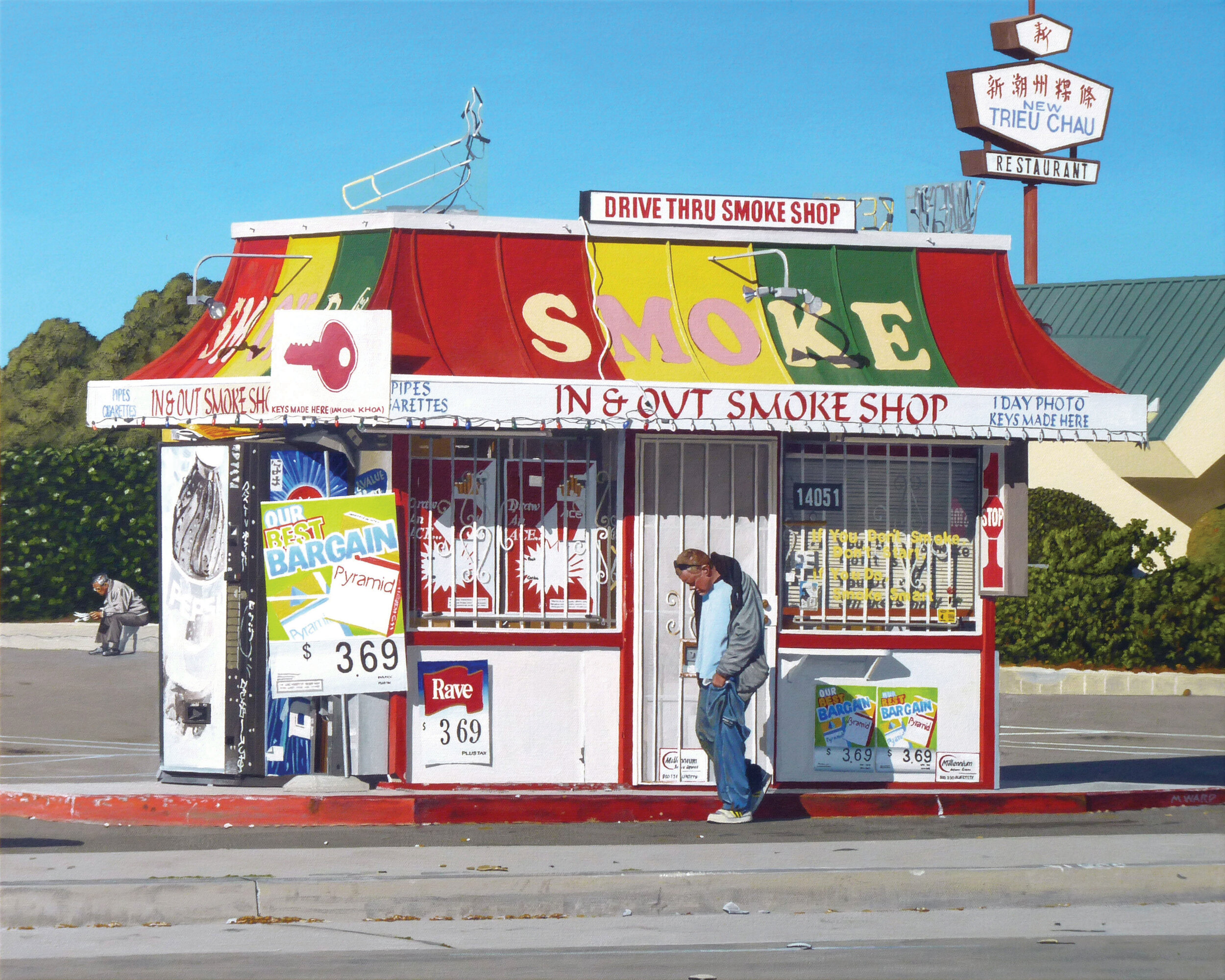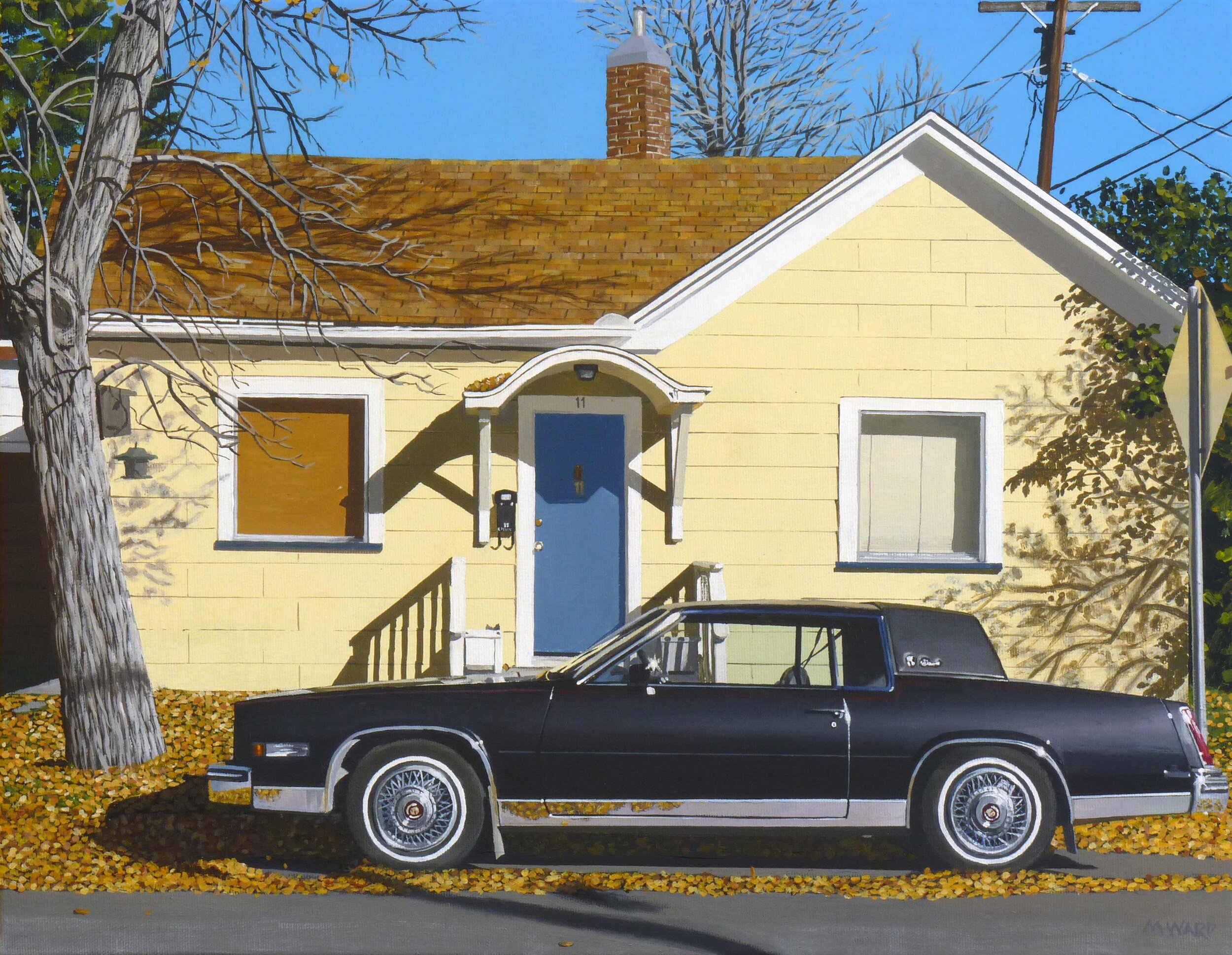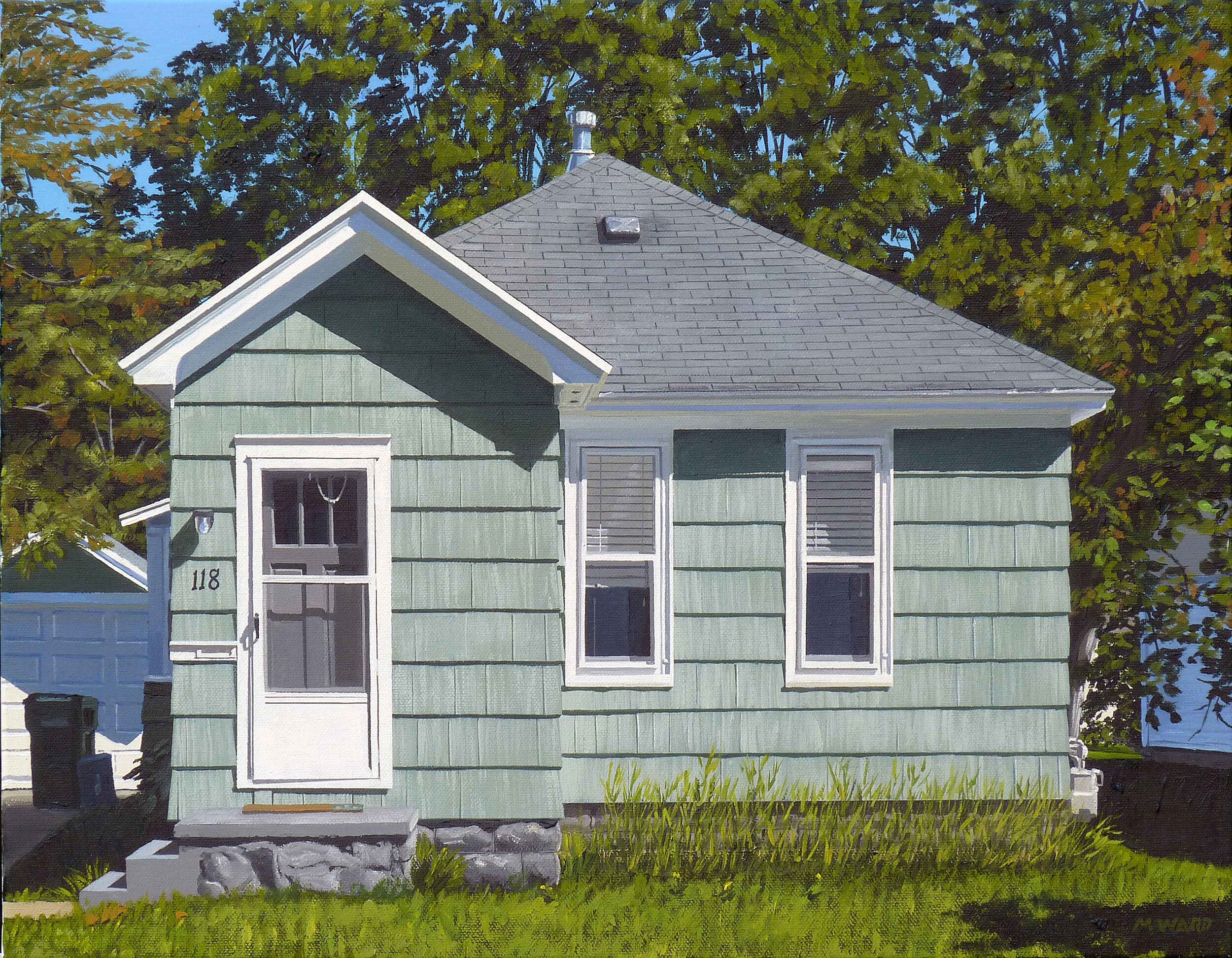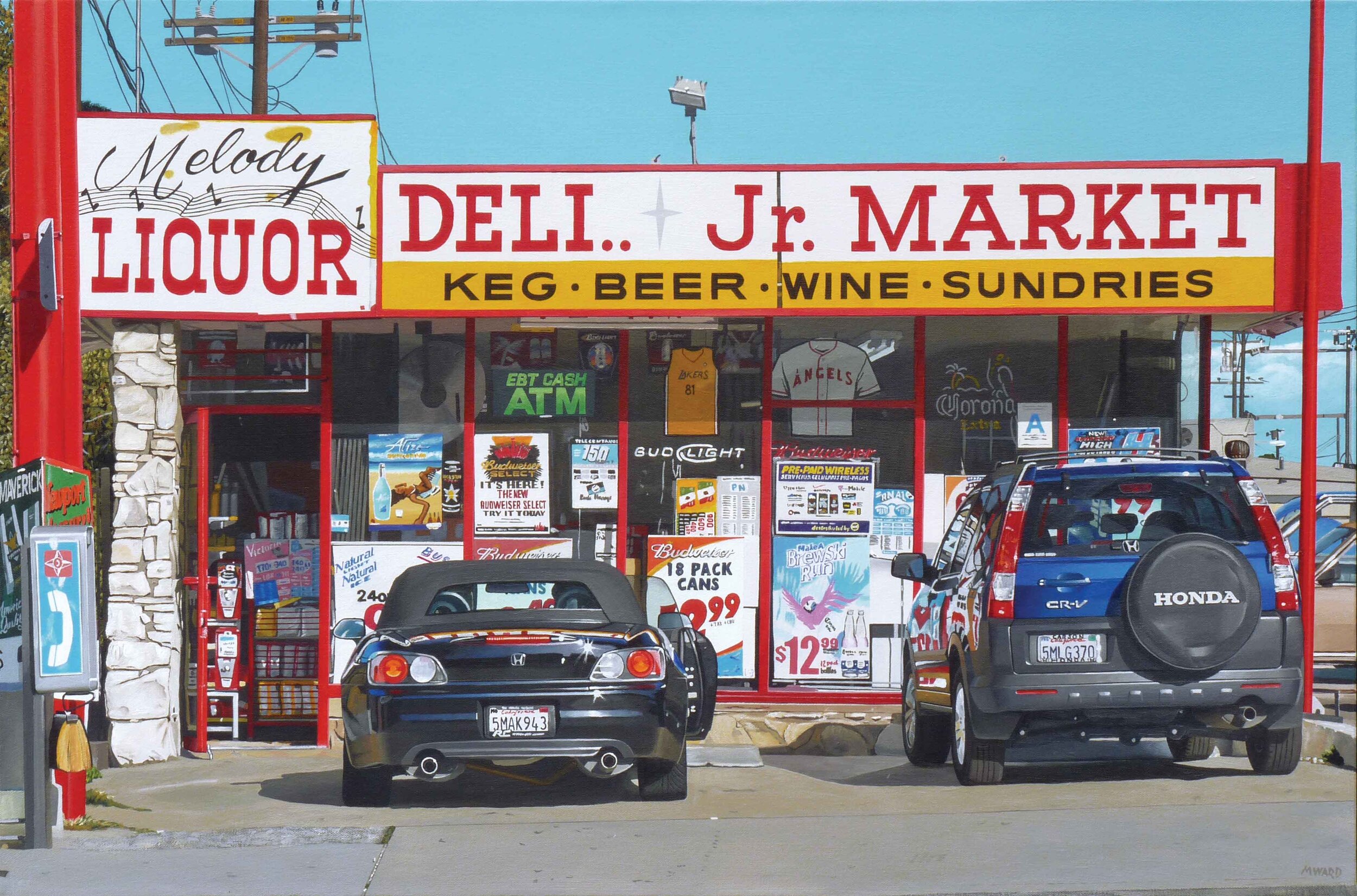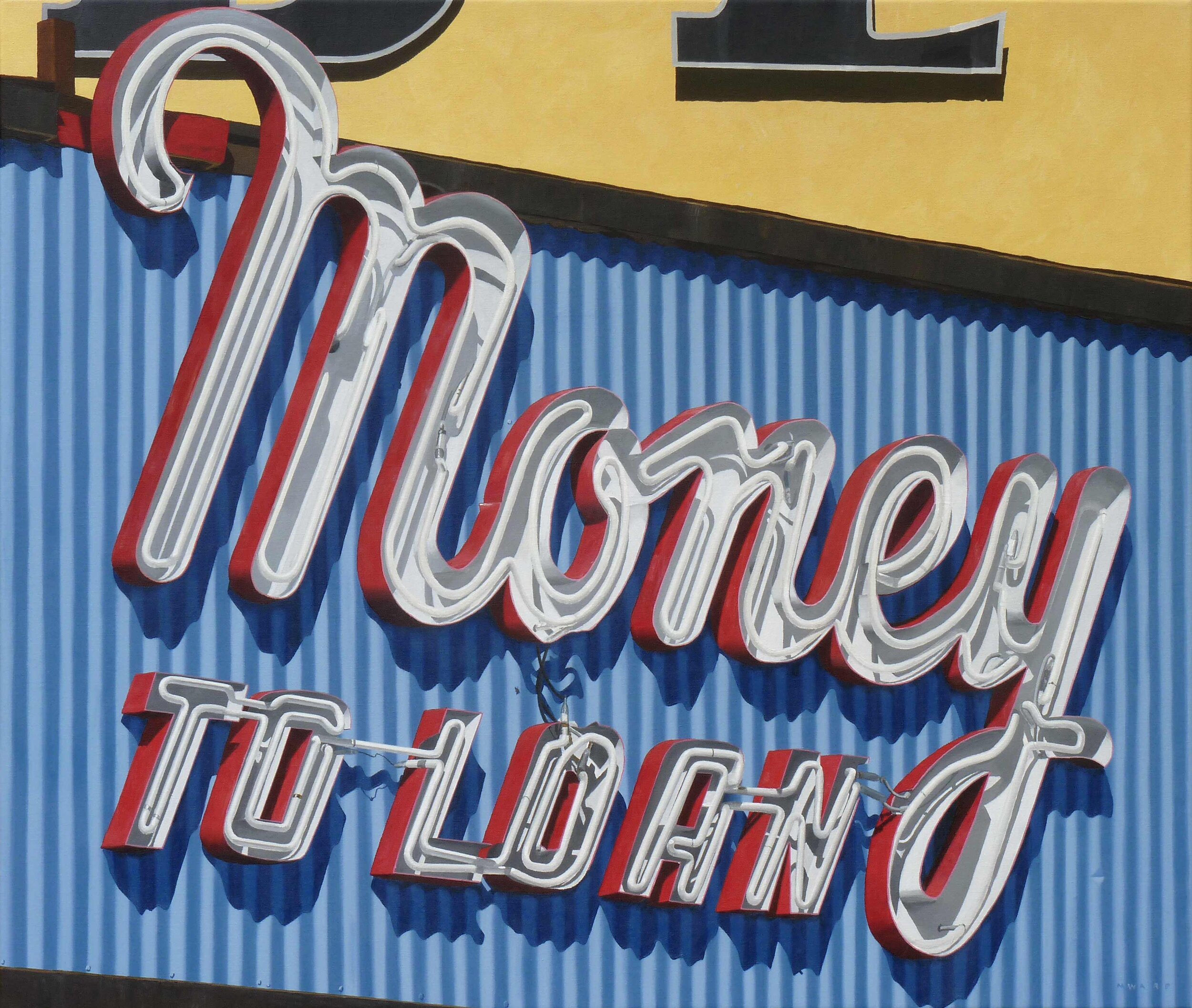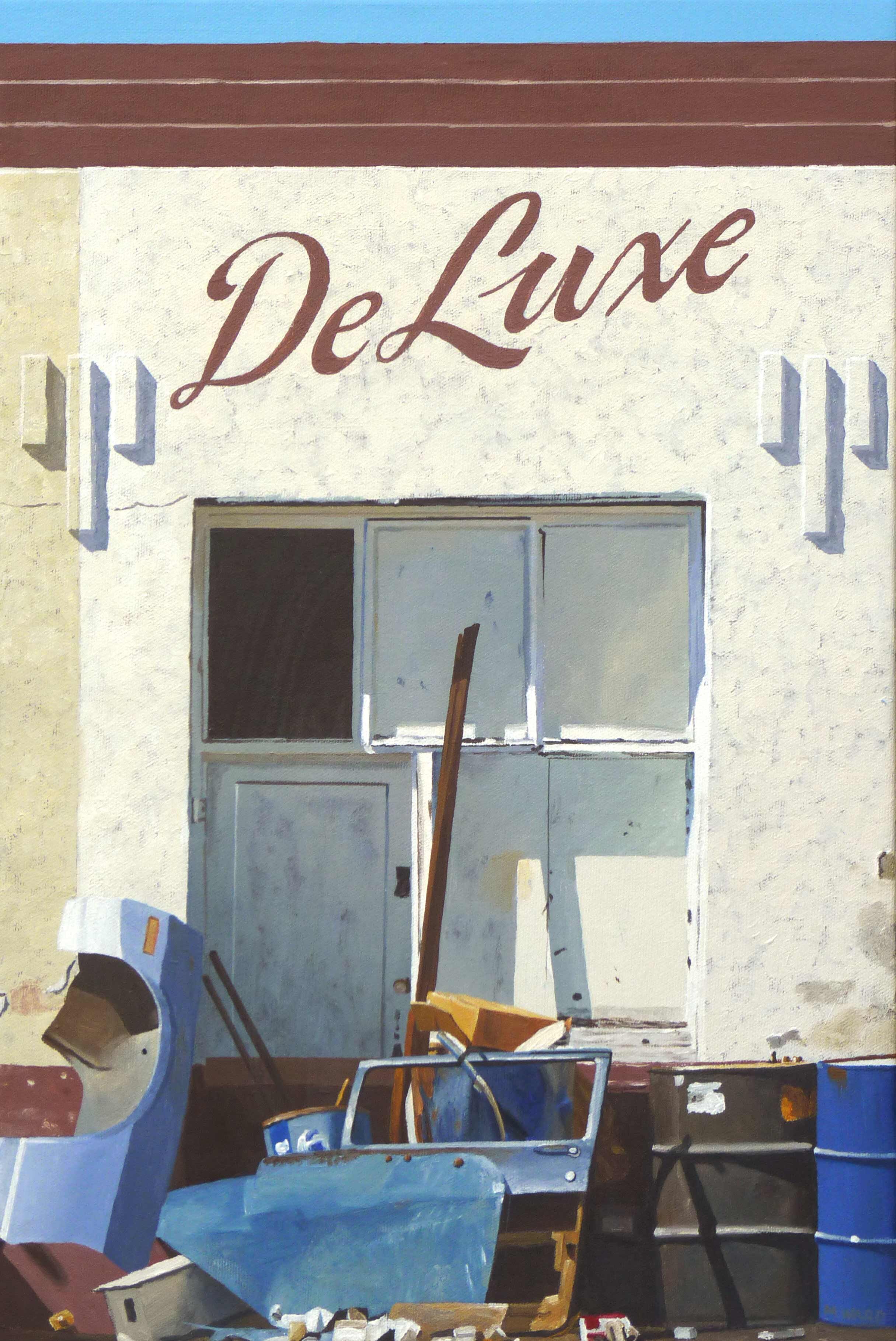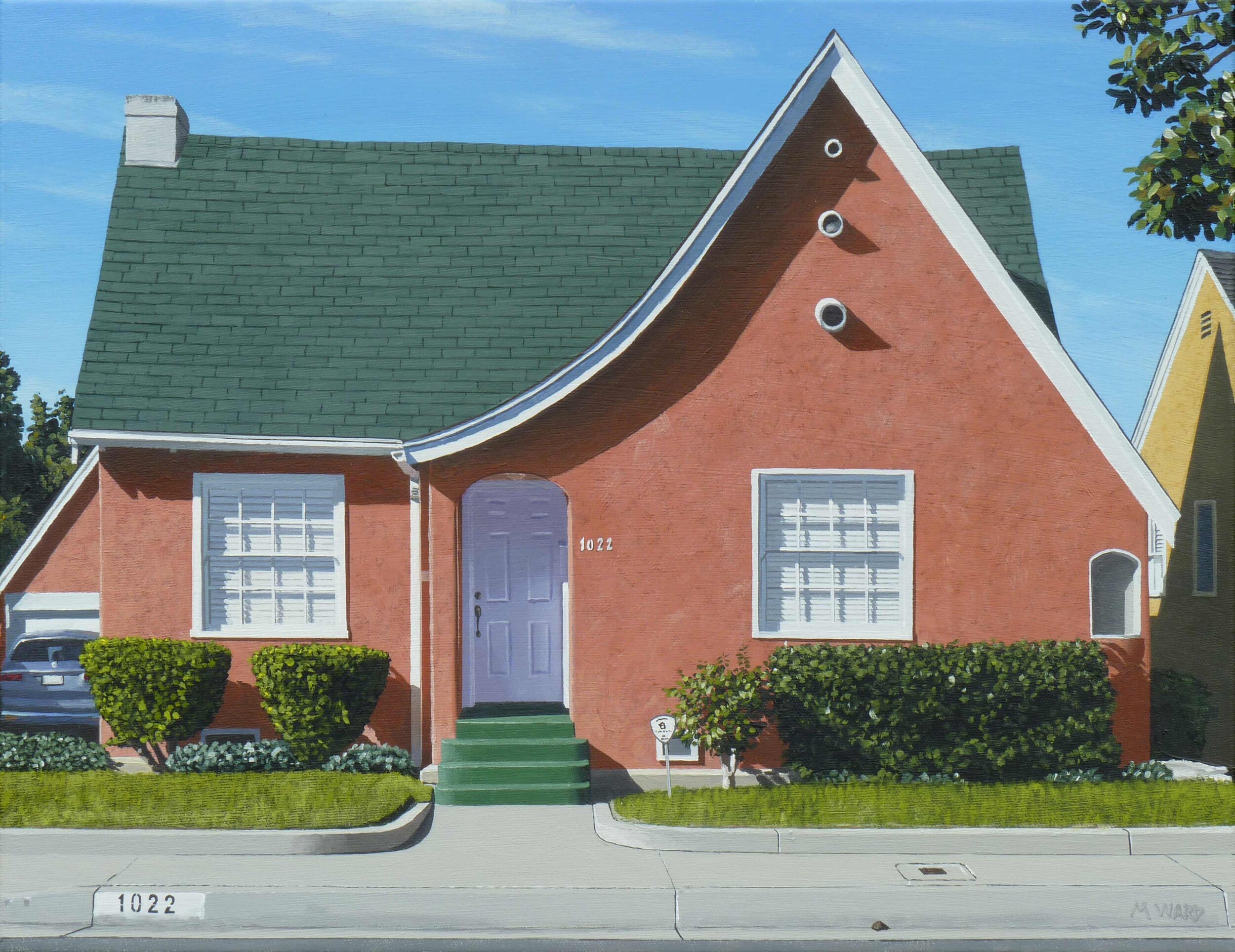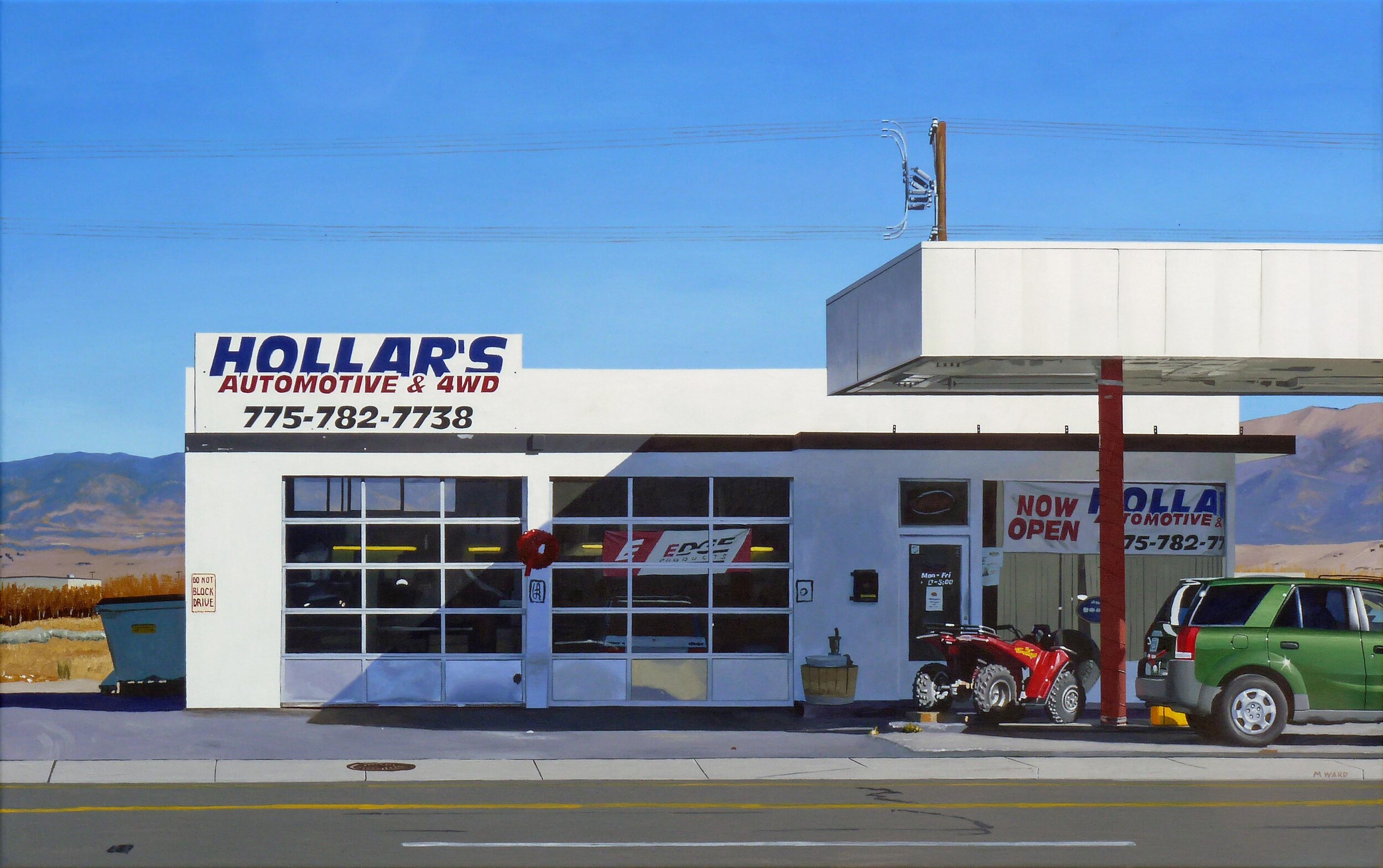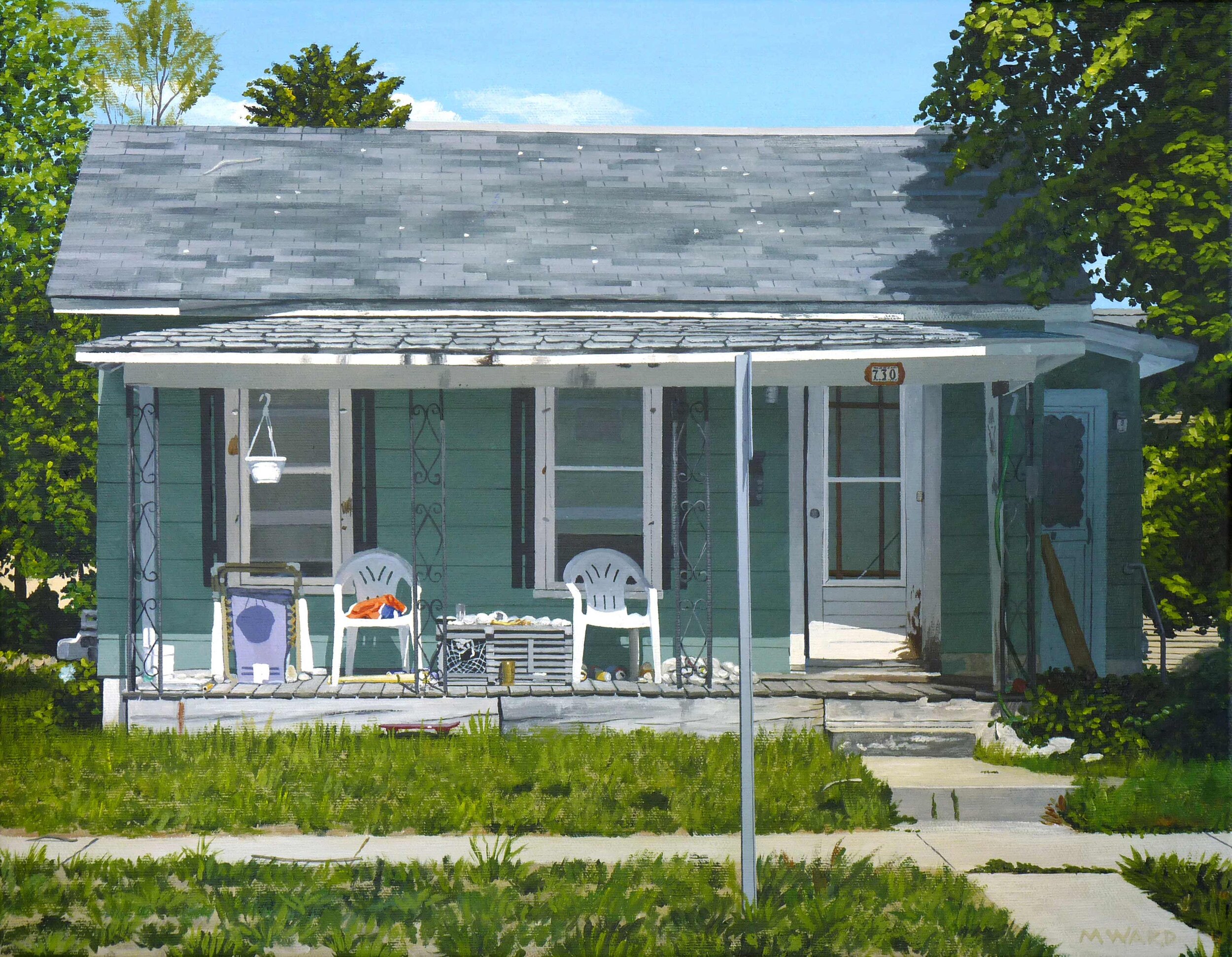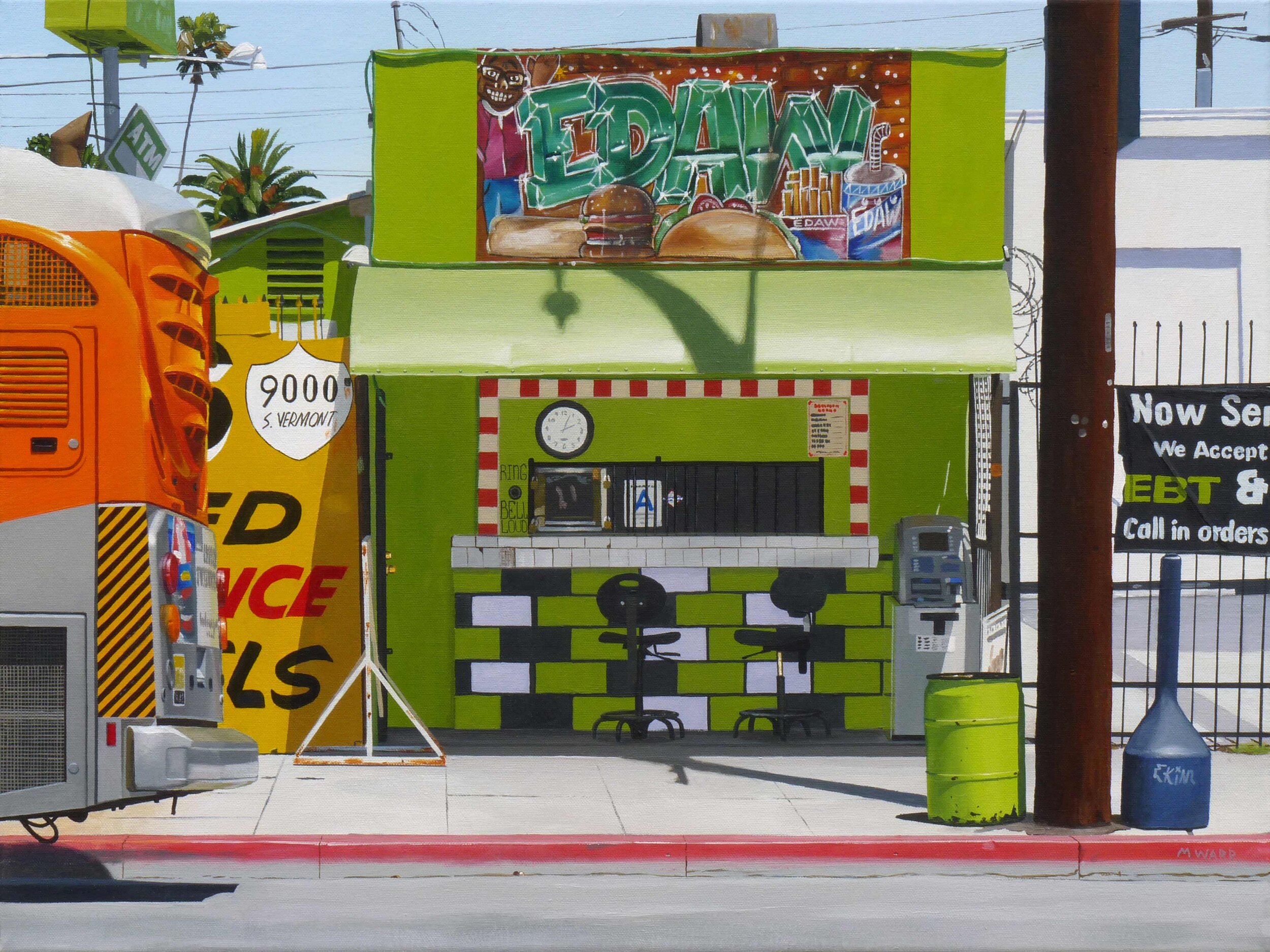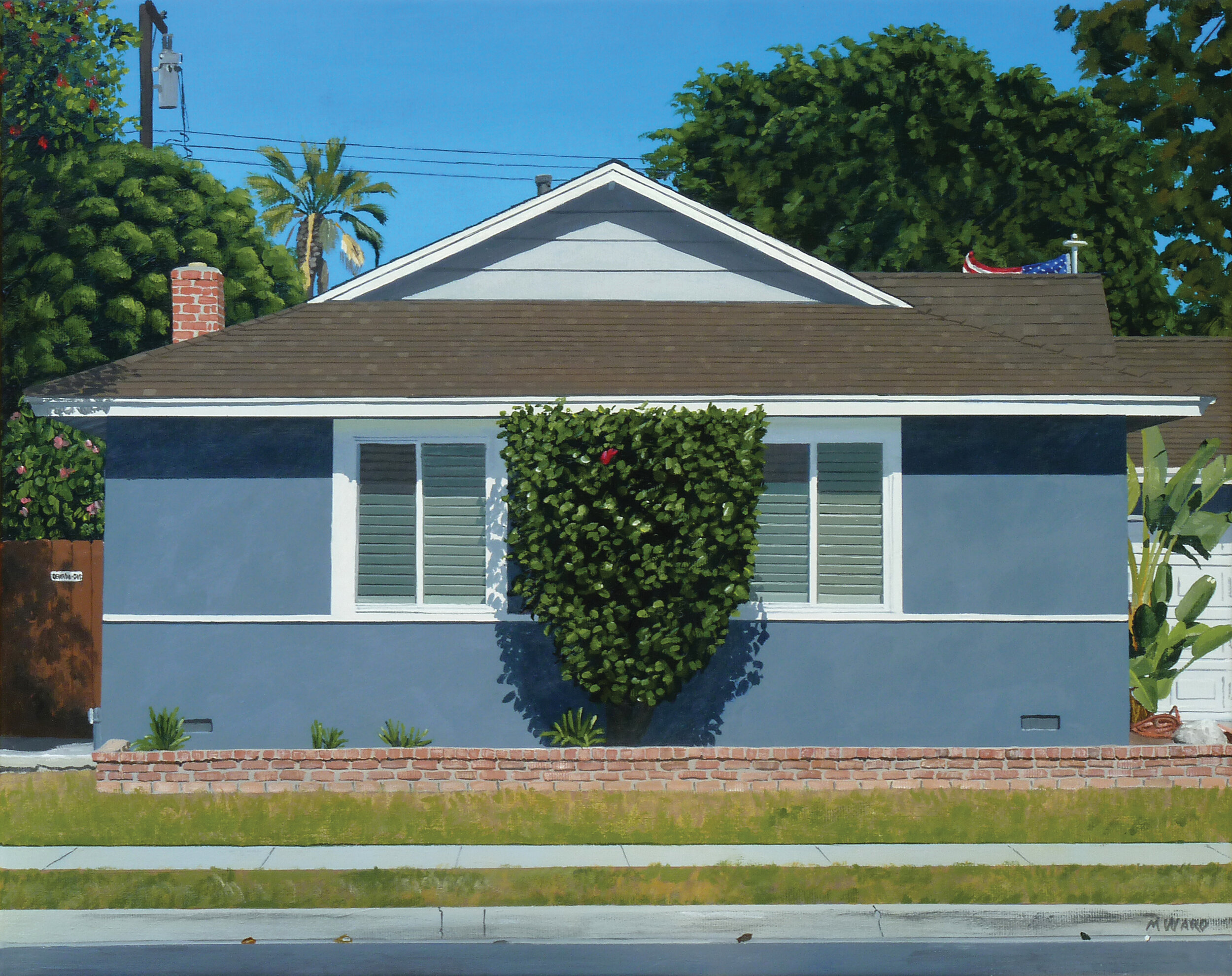Michael Ward: Walkabout + Home is Where the House Is
Southern California-based painter Michael Ward explores the ordinary in his scenes of California streets. He began capturing his environment with his father’s 35mm camera, and his artistry evolved into series of photorealism paintings of commercial buildings, signage, houses + other street scenes from a multitude of locations. While seeking out the details in our everyday surroundings, Ward’s paintings offer a snapshot of time—telling a story of the location’s history + his personal experiences—and exude a sense of nostalgia for the viewer. With our affinity for typography + signage, we can’t get enough of his work. We caught up with Michael on a selection of paintings from two of his series: Walkabout + Home is Where the House Is.
Asymmetric Magazine: Can you tell us a bit about this selection of work?
Michael Ward: The paintings fall into two groups: One group is street scenes, what I call my Walkabout series—images I have encountered in my travels through the years. They’re mostly storefronts with a neon sign thrown in. The locations range from New York City (JFK Restaurant) to Nevada (Hollars) to Los Angeles (Money to Loan, Edaw’s, DeLuxe, Haddock Roof Co., Melody Liquor) and Orange County (Consequences). In time they span 40+ years, from the slide I took of Haddock in the 1970s to last year’s Money to Loan. I have a background in graphic design, so typography has always appealed to me, which is why many of the images initially caught my eye.
The second group is from my Home is Where the House Is series: paintings of modest houses mostly from the middle of the last century—like the one I grew up in. These are also geographically diverse, from Michigan to Montana, New Orleans and Southern California. Everywhere I travel I’m on the lookout for houses to add to the series. Sometimes I discover them in my own back yard: Hibiscus is just down the street from where I live, and I’ve passed it thousands of times before finally realizing its artistic potential. I find that people often relate with strong emotion to these houses. They remind them of places they grew up in, or that their grandparents lived in. Often they’ll say, ‘I know where that is.’ They’re usually wrong about the actual house, but in a sense they’re right, as well.
AM: We love your take on everyday scenes in Southern California. Is there a particular location or establishment you've painted that you'd say resonates with you more than others?
MW: It’s hard to pick a favorite, but Consequences is a work that has a lot of meaning for me. The scene is in Garden Grove, a city transformed by the influx of Vietnamese immigrants, a consequence of our Asian misadventures. The Denny’s restaurant has turned Chinese, and the drive-through photo booth has, in our digital age, turned to selling cigarettes. So elements of the past that I grew up in co-exist with the present, in what I call ‘layers of time’. Even that present, like the soda machine, is starting to fade. The actual structure has been remodeled and repainted, so even this image, from photos taken a few years ago, has become a historical artifact.
AM: What themes do you typically pursue through your work?
MW: My work is all about noticing what gets overlooked as we go about our daily lives. By bearing witness, I discover the grace in ordinary things. The painting focuses the viewer’s attention, so hopefully they see it, as well. Interestingly, the themes in my paintings, when they have them, emerge as they are being painted. That’s what happened in Consequences. The presence of the Vietnamese in Orange County is a consequence of war, the repurposing of the building from film processing to cigarette-selling is a consequence of technology. The figure (who was really there when I took the source photo) is suffering the consequences of something, we just don’t know what.
AM: You were recently a part of the Art Along the Coast Studio Tour. Can you speak to what the tour is and your experience with it?
MW: With the closure of the 2020 Laguna Beach Festival of Arts due to the pandemic, some of the artists from that show got together to put together a studio tour so we could at least have some connection with the public this year. Paul Bond, an excellent artist, was the prime mover on this. Over 30 artists from all over Orange County participated. We artists need our public, not only to buy work, but to get feedback and just interact with people who love art.
AM: What have you learned about Southern California through capturing ‘the ordinary’?
MW: Southern California is supposed to be an ephemeral, wasn’t here yesterday kind of place, but I’ve come to appreciate its history, and the layers of time that accumulate everywhere. Also, even though progress obliterates the past, probably more so in Southern California than anywhere else, little bits remain in hidden corners, like eddies in a stream. Visitors to Southern California see the glitz and spectacle. I like to wander around backstage where there’s a whole lot more (and more interesting) stuff. The light in Southern California isn’t really different than anywhere else, but we think it is, probably because there’s more of it. I love the light of sunny days, which makes for sharp images. I’m usually out photographing in the middle of the day, so the shadows are not artfully long, but they are crisp.
I like to wander around backstage where there’s a whole lot more.
AM: You're a self-taught artist; how has your style and/or your subject matter evolved over the years?
MW: I started by painting signs in the style of photorealists such as Richard Cottingham. Later, I tackled more complex street scenes in emulation of Richard Estes. Slowly over the years, I’ve come to realize that my subjects are autobiographical. They all derive from my life experience in one way or another. I think that was the impetus for my House series. The first one I painted was very like the first house I grew up in. As I’ve travelled further afield, the paintings subjects have varied, but they all reflect what I’ve seen and experienced.
AM: In our current climate and pandemic, what's been keeping you grounded?
MW: Painting keeps me grounded. In these times, it’s nice to have something I have control over (though the paintings fight me sometimes). I miss being able to go to museums and galleries, but there’s plenty of art on the internet to be inspired by, even if I can’t see it up close. So art in general keeps me sane in these crazy times.
AM: We love to ask visual artists: What music are you currently listening to?
MW: I listen to podcasts while I paint—mostly of current affairs. But my favorite music podcast is Sinner’s Crossroads hosted by Kevin Nutt on WFMU. He plays Black gospel music from the early days to the 1970s and beyond. I’m not religious, but I find the music inspiring and uplifting.
AM: What can we expect to see from you next?
MW: I don’t always know what my next painting will be, but I have lots on my to-paint list. I recently had scans made of some of my slides taken in the 1970s and early 1980s, so I’ll be working on a few ‘historical’ images. Usually I have to think about what to paint for the annual Laguna Beach Festival of Arts. It takes me a full year to do enough work to fill up my booth. But thanks to the pandemic, I’ll have two years to do that, so I may work on some images that are less ‘sale-able’ but that I’ve long wanted to do. Stuff in the ‘why did he paint that?’ category.
View more of Michael Wards’ work at tmichaelward.weebly.com + Instagram.


